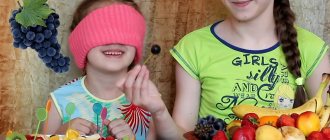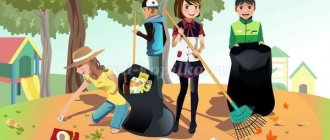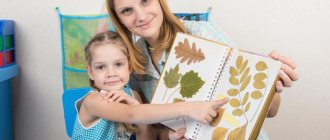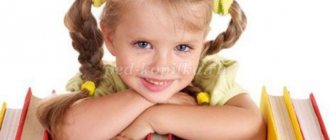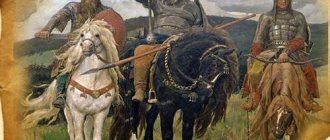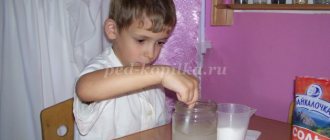Ecological project. in the preparatory group. on the topic: “Take care of the planet”
Transcript
1 MBDOU d/s 9 “Friendship” Environmental project in the preparatory group on the topic: “Take care of the planet” Author: teacher Kurochkina I.E. 2018 1
2 Project “Save the Planet” Duration of the project: 2 weeks (from January 22 to February 2) Project participants: children of the preparatory group for school, teachers, parents of students. Relevance: The lack of knowledge about human environmental activities leads to an indifferent attitude towards nature. Therefore, the work on the “Save the Planet” project was aimed at developing environmental knowledge, the ability to observe natural phenomena, and instilling rules of behavior in nature. Goal: To consolidate and expand children's knowledge about nature as an inexhaustible source of spiritual enrichment for people; awaken in children a keen interest and curiosity about the world around them; develop the child’s positive feelings towards nature. Objectives: - to form a system of basic environmental knowledge accessible to preschool children; — to develop skills in observing natural phenomena and objects; — development of environmental culture in children; - cultivate an emotionally positive, careful, caring attitude towards the natural world and the surrounding world in general; — fostering a caring attitude towards nature: maintaining cleanliness in the kindergarten areas and in their own yards. Work with parents: Consultations for parents: 1. Topic: “Environmental education in the family” 2
3 2. Topic: “Teach children to love nature” Planned result: - the level of activity of children will increase, independence in solving assigned tasks will increase; - the style of behavior of children in nature will change; - children’s knowledge of ecology will expand, - they will learn new types of didactic games and will be able to use these games at home. — design of an exhibition of children's works. The first preparatory stage: Studying methodological literature. Selection of fiction. Preparation of art materials for productive activities. The second stage of the project: Children's activities in educational areas: Social and communicative development 1. Educational conversation “The Earth is our common home” goal: to introduce children to new concepts (ecology) 2. Riddles on an environmental theme. 3. Conversation “Is life possible without air?” The goal is to reinforce the properties of air with children, cultivate a caring attitude towards the environment, and introduce preschoolers to some phenomena of inanimate nature (air and wind). 3
4 4. Conversation: “What do we know about water.” Goal - To consolidate children's knowledge about the phenomena of inanimate nature - water and its properties, to consolidate knowledge about the properties of water, to cultivate a caring attitude towards water and its conservation. 5. Conversation: “Water is life The goal is to cultivate a caring attitude towards water and its conservation. 6. Conversation “This is not possible, but this is possible and necessary.” The goal is to form the right attitude towards nature, teach children to observe, analyze, and draw conclusions. 7. Conversation: “Why animals disappear.” The goal is to introduce plants and animals that are listed in the Red Book. Speech development Didactic games: 1. “What would happen if they disappeared from the forest” 2. “Living and inanimate.” 3. “Earth, water, fire, air” 4. “Liquid, solid” 5. “Chain of sentences” 6. “What is good, what is bad” 7. “Chain of words...” 8. “Build a sentence based on the plot picture ..." Cognitive development 1. Reading fiction: “Little Travellers” 2. Experimental activities with air during a walk: children playing with the wind using “plumes”, pinwheels, ribbons Experiment “Properties of Air”.
5 4. Observation “How to help nature” 5. FEMP “Let’s help the hedgehog” 6. Experimental activity: “Water cycle in nature” “What kind of water is there?” “Properties of water” 7. The living and inanimate world: “It’s better to litter now, get out of the habit, kids! 8. Experimental activity: “Sorting out the garbage”, “Burying different types of garbage: packaging material; food products; pieces of paper from sweets" (for further observation of them). 9. Research activity: “Tree bark” 10. Labor: “Raking snow around trees” Physical development 1. P/i: “Cucumber” 2. I.r. long jump, shuttle run 3. Breathe. gymnastics 4. Outdoor game “Balloon”. 5. Physical education 6. P/games: “The sea is worried once” 7. Physical education Artistic and aesthetic development 1. Listening to the melody of the wind (different authors) 2. Listening to music: the sound of rain, the sound of the sea, drops, stream 3. Coloring pages “Smeshariki” and nature" 4. Working with waste material. 5. Teamwork. Making a poster “Save the planet!” 5
6 PHOTO REPORT 6
7 7
8 8
9 9
10 10
11 Conclusion The children really enjoyed the week dedicated to the theme “Take care of the planet”. They enjoyed listening to interesting and educational stories. During the conversations, the children learned how bad the situation is with drinking water and how important it is to save water. Through literary stories, children learned to treat nature with care and reverence, because they learned that every flower seed, every blade of grass, worm, small stream needs human help. Also, these stories were educational in nature, because children learned how an earthworm is useful, why snow is raked around trees, and what the “life” of a small stream depends on. In their area, the children picked up trash on their own and discussed how much fun it is for plants and people now, because the surroundings are clean. During educational conversations and experiments, children became acquainted with the topics “What is life impossible without?”, “How to help nature?”. We conducted experiments with air and water and concluded that they are the sources of life on earth for all living things. Also, during the experiment with plants in the group (onions), we realized that without light and sun, there is also no life. Thus, we can conclude that as a result of the project, children: 1. The level of motivation for classes has increased; 2. Children have an idea that water is one of the most important resources of the Earth; learned to understand that water brings life to plants, animals, and people. 3. Children can analyze the results of observations and draw conclusions about some patterns and relationships in nature; 4. Children have an idea of the transition of substances from solid to liquid and vapor, and vice versa; establish connections between habitat and lifestyle. eleven
12 5. Children have formed concepts about the state of water depending on the time of year. 6. Children understand the need to take care of water as a natural resource. 7. Children put into practice knowledge about caring for water. The results of our project showed that humans and their activities negatively affect the environment, and therefore humans. Each of us must remember this and provide all possible daily assistance in preventing environmental disaster. People, take care of the world around you, save it not only for yourself, but also for your descendants! 12
Ecology project “We are friends with nature, we don’t need garbage”
After a certain period of time, check the condition of the materials. Note the result of exposure to sun, rain, soil.
Record your observations with your children. At the end of the experiment, draw a conclusion about what material and waste has decomposed in the soil and what people need to do with solid waste to protect the environment.
8. Direct educational activities
Subject:
“It’s better to litter now, get out of the habit, kids!”
Target:
To develop skills in environmental education of children.
The teacher's story about the rules of behavior in nature. Familiarization with environmental protection signs (you cannot throw garbage into the river, in the forest; pollute the soil; throw garbage in undesignated places). Summarize the experiment and observations of food waste. Planting beans.
9. Games.
1. “What did I see?”
Purpose: to train children in recognizing objects made from different materials; develop memory, attention, observation.
Move. The teacher offers to play a game and asks the question: “What metal (fabric, plastic, glass) did you see on the way to kindergarten?” The one who names the most items wins.
2. “Tell me about the subject”
Goal: to consolidate the idea of the materials from which objects are made.
Equipment: a cube with images of types of materials on the sides.
Move. Each child throws a cube and catches it; what material falls out, he talks about it. The remaining players control the correct determination of the properties and quality of the material.
3. “What’s extra?”
Goal: to teach to identify common features of objects; consolidate knowledge about types of materials; develop mindfulness.
Equipment: cards with images of four objects, three of which are made from one material, and one from another.
Move. The teacher distributes several cards. Children take turns identifying the extra object, the material of which does not correspond to the material of the other three, and explaining why.
Complication. After the child has identified the extra object, ask the question: “What will happen if the vase is made of fabric?” and so on.
4. “Guess the material”
Goal: to consolidate knowledge about the properties and qualities of materials and their names.
Move. Dunno comes to visit, he forgot the name of the materials, but only knows their properties. He asks for help. For example, this material is easily wrinkled, torn, and soaked in water. What is it called?
5. “Good and bad”
Goal: to activate the ability to determine the properties and quality of materials, to establish cause-and-effect relationships between the characteristics of the material and its purpose.
Move. The teacher names the material, the children identify its positive and negative features.
